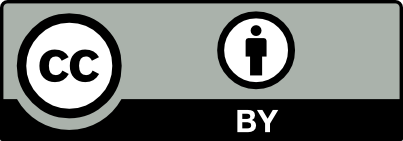Checking for non-preferred file/folder path names (may take a long time depending on the number of files/folders) ...
This resource contains some files/folders that have non-preferred characters in their name. Show non-conforming files/folders.
This resource contains content types with files that need to be updated to match with metadata changes. Show content type files that need updating.
| Authors: |
|
|
|---|---|---|
| Owners: |
|
This resource does not have an owner who is an active HydroShare user. Contact CUAHSI (help@cuahsi.org) for information on this resource. |
| Type: | Resource | |
| Storage: | The size of this resource is 69.2 KB | |
| Created: | Aug 01, 2025 at 2:19 p.m. (UTC) | |
| Last updated: | Aug 01, 2025 at 2:26 p.m. (UTC) | |
| Citation: | See how to cite this resource |
| Sharing Status: | Public |
|---|---|
| Views: | 596 |
| Downloads: | 1 |
| +1 Votes: | Be the first one to this. |
| Comments: | No comments (yet) |
Abstract
This study was conducted in the Paint Rock research watershed (outlet location: 34.96861724, -86.16501705) on privately owned property in Jackson County (AL, USA) as part of the Aquatic Intermittency effects on Microbiomes in Streams (AIMS) project, an NSF EPSCoR funded project (OIA 2019603). The project sought to explore the impacts of stream drying on downstream water quality across Kansas, Oklahoma, Alabama, and Idaho, integrating datasets on hydrology, microbiomes, macroinvertebrates, and biogeochemistry. The watershed drains a non-perennial unnamed tributary to Burks Creek and contains 2.97 km2 of deciduous forest in the Cumberland Plateau physiographic section. Located near Estillfork, AL, the watershed spans an elevation range from 211 to 550 m above sea level and is a tributary to the Paint Rock River (within the larger Tennessee basin). The region has a humid subtropical climate, with mean daily January and July air temperatures of 4.4°C and 25.4°C respectively, and mean annual precipitation of 1,390 mm/yr.
We collected samples every ~3 weeks from October 13, 2021, to October 1, 2024, at the outlet of our watershed (PRM01, approach 1) and seasonally at seven distributed sites (approach 2). We collected triplicate water samples for dissolved organic matter (DOM). We collected samples at the specified location when water was present using a syringe in a well-mixed area of the stream. We then filtered water through PES PLUS membrane syringe filters into clean, leached amber HDPE bottles following the AIMS Surface Water Chemistry SOP (Burgin 2024). Samples were refrigerated until analysis on a Horiba Aqualog spectrometer at either University of Alabama or Idaho State University. DOM excitation-emissions matrices and absorbance spectra were collected on a Horiba Aqualog from 249 to 830 nm at 5-nm increments at the University of Alabama and/or Idaho State University. Integration times varied from 2 to 4 seconds, based on sample concentration. EEMs were blank-corrected, Raleigh masked, inner filter effects were removed, and values were Raman-normalized using Aqualog software. Standard fluorescence metrics were calculated from corrected EEMs using the StaRdom package in R. These included: biological index, fluorescence index, humification index, and fluorescence at standard peaks: amino acid-like peak tyrosine (B) and amino acid-like peak tryptophan (T), humic-like peaks A and C, and humic-like peak M. Absorbance metrics were also calculated in StaRdom, including absorbance at 254 nm and absorbance at 300 nm; E2:E3, and absorbance slopes 275-295, 350-400, and 300-700, and slope ratio. Mean and standard deviation of triplicate samples are reported in data.
Subject Keywords
Coverage
Spatial
Temporal
| Start Date: | |
|---|---|
| End Date: |
Content
Related Resources
| This resource is described by | https://www.hydroshare.org/resource/656211b1a1484433a3bc524fb968b4bd/ |
| The content of this resource references | https://www.hydroshare.org/resource/ac0c4f31e8a64c52bae41e5719bd3c14/ |
Credits
Funding Agencies
This resource was created using funding from the following sources:
| Agency Name | Award Title | Award Number |
|---|---|---|
| U.S. National Science Foundation | Aquatic Intermittency Effects of Microbiomes on Streams | 2019603 |
How to Cite
This resource is shared under the Creative Commons Attribution CC BY.
http://creativecommons.org/licenses/by/4.0/

Comments
There are currently no comments
New Comment